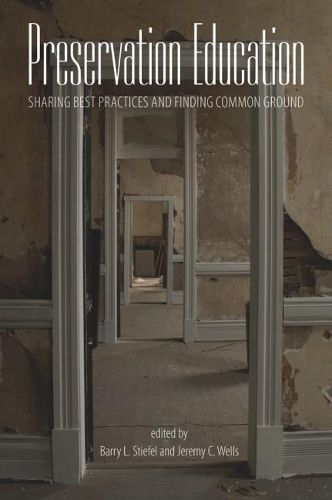Readings Newsletter
Become a Readings Member to make your shopping experience even easier.
Sign in or sign up for free!
You’re not far away from qualifying for FREE standard shipping within Australia
You’ve qualified for FREE standard shipping within Australia
The cart is loading…






Over the past twenty years, there has been a fundamental shift in the institutional organization of historic preservation education. Historic preservation is the most recent arrival in the collection of built environment disciplines and therefore lacks the pedagogical depth and breadth found in allied endeavors such as architecture and planning. As the first degree programs in preservation only date to the 1970s and the first doctoral programs to the 1990s, new faculty are confronted with pedagogical challenges that are unique to this relatively nascent field. Based on a conference that included educators from around the world, Barry L. Stiefel and Jeremy C. Wells now present a collection that seeks to address fundamental issues of preservation pedagogy, outcome-based education and assessment, and global issues of authenticity and significance in historic preservation. The editors argue that the subject of the analysis has shifted from, What is the best way to fix a historic building? to, What are the best ways for teaching people how to preserve historic properties (and why) according to the various standards that have been established?
This important reconsideration of the state of the field in historic preservation education will appeal to a broad audience across numerous disciplines.
$9.00 standard shipping within Australia
FREE standard shipping within Australia for orders over $100.00
Express & International shipping calculated at checkout
Over the past twenty years, there has been a fundamental shift in the institutional organization of historic preservation education. Historic preservation is the most recent arrival in the collection of built environment disciplines and therefore lacks the pedagogical depth and breadth found in allied endeavors such as architecture and planning. As the first degree programs in preservation only date to the 1970s and the first doctoral programs to the 1990s, new faculty are confronted with pedagogical challenges that are unique to this relatively nascent field. Based on a conference that included educators from around the world, Barry L. Stiefel and Jeremy C. Wells now present a collection that seeks to address fundamental issues of preservation pedagogy, outcome-based education and assessment, and global issues of authenticity and significance in historic preservation. The editors argue that the subject of the analysis has shifted from, What is the best way to fix a historic building? to, What are the best ways for teaching people how to preserve historic properties (and why) according to the various standards that have been established?
This important reconsideration of the state of the field in historic preservation education will appeal to a broad audience across numerous disciplines.